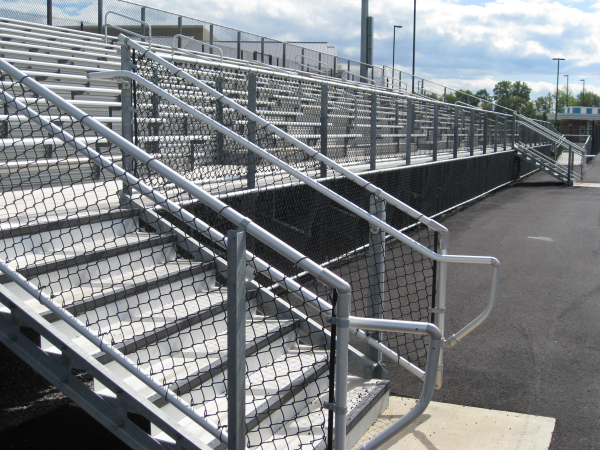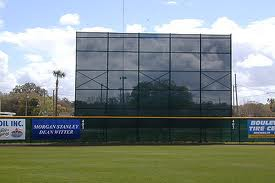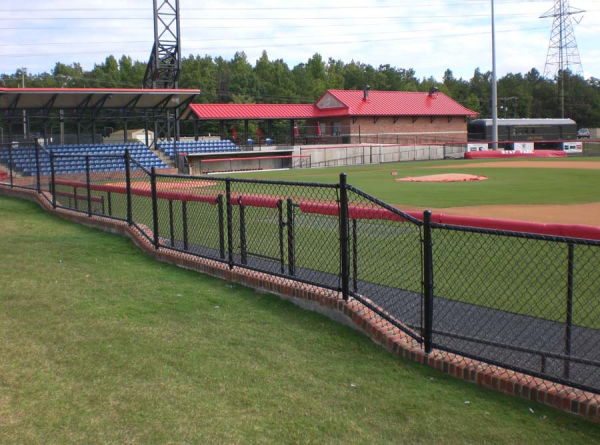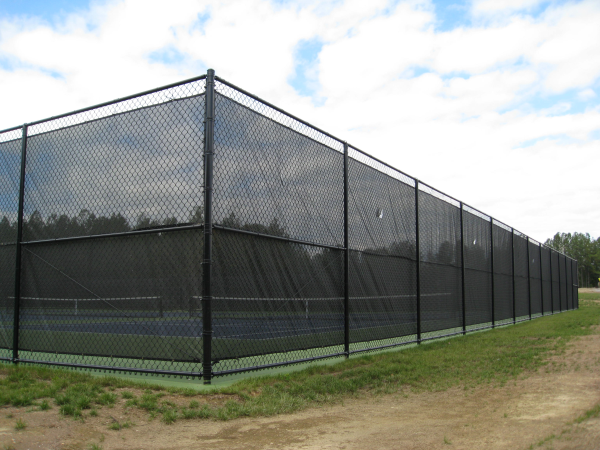2025-09-11 01:42:57 am Athletic field fences play a crucial role in the organization, safety, and security of sporting events. These fences provide crowd control, venue security, and safety for both players and spectators. Typically made of chain-link, athletic field fences help to differentiate specific areas of sporting fields, ensuring that everyone remains in their designated space. Whether the fence screens athletes or protects viewers, the fence is an integral part of any sporting venue. The type of fencing used depends largely on the venue and the level of play. Sports like football, baseball, softball, and tennis all rely heavily on fencing for various purposes, making field fences an important consideration in facility design and maintenance. In high school football, field fences are used primarily to separate players and spectators. These fences usually surround the track that often encircles the football field. The fences are generally four feet high and are made from chain-link material. For aesthetics and durability, these chain-link fences are often PVC coated in various colors. High school football fields also typically have double drive gates and maintenance access gates located at the ends of the running track. These gates allow easy access for maintenance equipment and emergency vehicles. Additionally, four-foot pedestrian gates are installed where players and coaches enter the field of play. On the side of the stadium that parallels the road, an attractive ornamental fence is often used. This enhances the overall appearance of the venue and gives a professional look to the facility. Specialty fencing is also used on the edge of the bleachers, ensuring that spectators (especially children) do not slip through the railings and onto the field or track. While most professional football stadiums do not use fencing within the field area, railings are often used to separate players and fans, providing a similar level of safety and security. Baseball Field Fences
Baseball fields are among the most common venues for athletic field fences, and they often use a variety of fencing types to serve different purposes. The sideline perimeters of baseball fields are typically fenced with four to six-foot-high chain-link fences, which help to keep spectators safe and establish clear boundaries. Backstops are one of the most prominent fencing features on a baseball field. They are constructed using specialty fencing that often consists of three separate sections, each approximately 30 feet wide and 25 feet high, depending on the design. These backstops are built with an overhang to prevent foul balls from hitting spectators. The outfield fences are usually six feet high and are often topped with bright yellow tubing. This tubing serves as a visual marker, helping players gauge a safe distance when tracking fly balls, and it also reduces the risk of injury by providing a softer edge compared to the metal top rail of the fence. Depending on dugout designs, fences can be attached to the front railings, or the dugout can be a complete chain-link enclosure. Bullpens are also enclosed using chain-link fences, which can be up to eight feet tall and are often screened with fabric to provide privacy for the players. Batting cages are another key feature of baseball field fences, and they are usually made from thicker six-gauge chain-link material. This ensures durability, as the fences are subjected to heavy wear and tear during batting practice. A relatively new addition to baseball field fences is the "batter's eye" screening. This fence add-on is usually positioned in the center of the outfield fence and consists of a screen that is about 20 feet tall and 140 feet wide. The purpose of the batter's eye is to provide the batter with a clear, undistracted view of the ball as it comes from the pitcher, ensuring the white baseball stands out against a dark background. Tennis Court Fences
Tennis is another sport that relies heavily on field fences to enclose its courts and contain tennis balls. Tennis court layouts can vary significantly, but the fencing used for these courts is generally consistent. The fences are typically ten feet tall and made from 11-gauge mesh, which can be galvanized or vinyl-coated, with green being the most common color for the vinyl coating. The chain-link mesh used on tennis courts is often 1 3/8 inches wide, as opposed to the standard two-inch diamond width. This prevents tennis balls from getting stuck in the fence. The fencing around tennis courts usually includes top and bottom rails, and a middle rail is also common due to the height of the fence. A bottom rail is generally preferred over tension wire, as it helps prevent tennis balls from rolling out of the court. To further enhance gameplay, screening is commonly added to these fences to reduce the effects of wind on the ball trajectory. The screening also helps prevent tennis balls from getting wedged in the fence. In some rare cases, tennis courts are completely enclosed with a chain-link roof, often for smaller courts located in confined areas. Installation and Maintenance of Athletic Field Fences
Proper installation of field fences is critical to their effectiveness and durability. For baseball, softball, and football fields, fence posts are usually set in the ground with a concrete footing to provide stability. Tennis fences, on the other hand, are often core drilled into the court surface or set in place before the court surface is laid down. This method of installation ensures that the fence is sturdy and able to withstand the demands of gameplay. All types of athletic field fences can be vinyl-coated for aesthetic purposes. Vinyl coatings not only improve the appearance of the fence but also help protect the metal from rust and corrosion, extending the life of the fence. Additionally, fabric screening can be added to field fences to enhance privacy, reduce wind, or simply improve the appearance of the venue. Decorative and Functional Purposes of Field Fences
Athletic field fences are not just functional; they also serve decorative purposes. For example, ornamental fences along the front of a stadium or venue can create an attractive boundary that enhances the overall appearance of the facility. Colored vinyl coatings and fabric screens can also be used to match the color scheme of the team or the venue, adding a customized touch that improves visual appeal. Field fences also contribute to the safety and organization of a sporting event. By providing clear boundaries between spectator areas, player areas, and the field of play, fences help ensure that everyone knows where they are supposed to be. This is especially important in maintaining crowd control, particularly during high-attendance events. Conclusion: The Importance of Field Fences in Athletic Venues
Athletic field fences are an essential part of any sporting venue. They provide safety, security, and crowd control, while also contributing to the aesthetic appeal of the facility. Whether used for football, baseball, tennis, or any other sport, field fences help define the space, protect players and spectators, and enhance the overall experience of the game. Next time you attend a sporting event, take a moment to appreciate the various types of fencing around the venue. From backstops and outfield fences to tennis court enclosures, each type of field fence plays a crucial role in the functionality and safety of the venue. If you're interested in learning more about athletic field fences or need fencing for your facility, contact Hurricane Fence. We're here to help you find the right fencing solution to meet your needs. 






